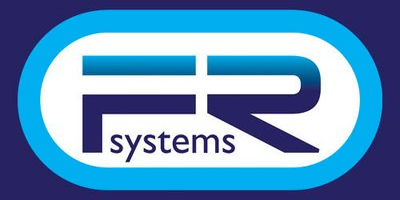Explained waits lowers the stress of the line
When we're told that we may have to wait longer because there’s been an accident, or due to the terrible weather (number 4), we become more accepting and patient of the waiting period. This helps people feel happier.
Having a one-in, one-out system helps us to feel less likely to be overlooked or forgotten, or that a fair system doesn’t favor noisy troublemakers, demanding a bump up the queue (number 5), and known finite waits mean we won't be waiting forever in process waits.
These are some of the queue psychology factors that add anxiety to our queuing or waiting experiences.
So, what does the psychology of queuing say we should do about them?
Planning to negate the frustration of waiting lines
- Entertain your consumers while they queue
- Welcome them into the queue to begin the process
- Make their experience more comfortable
- Provide a fair system for everyone
- Offer distractions that offer real value
- Keep them informed and educated of progress at every step of the process
- Provide an estimated wait time - known finite waits are more psychologically manageable than open-ended waiting.
- Set expectations—then meet or exceed them
- Over-deliver whenever possible
- Leave consumers with a satisfactory memory of their experience
Waiting lines operations and queue management software is a big part of resolving a poor queuing culture for businesses. Anything you do to improve your service and consumer satisfaction fits into this practice - especially if you can avoid the dreaded 'watched pot' effect - seeing progress can have the biggest impact. The actual time spent in the waiting line will seem shorter if their waiting time is filled with distractions or activities; customer experience should be at the top of your list when people are standing in line. Anxiety makes uncertain waits or unexplained waits feel longer too, so finding ways to relax those people waiting is another reward of good queue management.
Keeping your consumers happy while they wait in line adds value to your brand, service, and it’s a lot easier to maintain than trying to appease a dissatisfied customer. With the damage to queuing psychology done early in the process, it’s probably already too late to provide a satisfactory experience for many people.
Given that waiting in line is often the first step in providing a service, keeping your consumers content from that point is vital.
If you can find ways to make the time feel shorter, by providing entertainment, information, a game to play or survey to complete—that could be an appropriate solution to queue management for many. As could creating a ‘community’ of waiting customers - solo waits feel longer than group waiting, so why not try introduce a few connections if possible? You can easily add a message or a Discord button to a Queue-Fair Queue Page, for example.
Identifying clientele whose issues you can resolve in line, or whose needs are less consuming, they can be managed and removed far quicker—that’s a win for everyone. Perhaps a queue runner or triage staff could work for you?
Practical applications and real-life solutions
1. Uncertain waits - Estimating waiting times and over-delivering
We all hate wasting time, and can cope better when waiting in line, or at least make an informed decision about our time spent waiting in queues when we’re given an estimated waiting time. Those finite explained waits are far easier for our brains to handle than the chaos of not knowing or unfair waits, and can reduce perceived waiting time.
When warned how long you’re likely to be waiting and the actual waiting time in the queue is less, then we feel like we’ve won a little extra time for the things we’d rather be doing. In reality, nothing has changed—that was always going to be how long you would be queuing, but doesn’t it just feel better?
Adversely, the opposite is true. Failing to meet expectations will damage customer satisfaction and often ruin the experience completely. No matter how kind or polite the provider may be, it’s far tougher to turn a bad experience around than it is to maintain a good one.

2. Providing material to pass the time
Constructive use of our time (even if it’s only a perception of constructiveness) gives value to our time and perceived wait time, especially when this is short compared with the service time. Research suggests reading, socialising with other queuing customers, having a coffee and taking a moment can all make a wait feel shorter and more bearable.
That’s why many waiting rooms or service areas include magazines, self service coffee machines, memorabilia and intriguing décor—anything to distracts the customers waiting from skulking into ‘dead time’. Expected wait time in a waiting room give a consumer the option to action other tasks and return when they are at the top of the list - so long as it matches the actual wait time in the waiting line.
In a Queue-Fair Virtual Waiting Room, you have full control of the HTML of the Queue Pages, so they can look however you want them to look and say whatever you want them to say. Why not engage your visitors with a product slideshow, or a video of the artist for whom they want to buy tickets? The only limit is your imagination, after all.
3. Handing out menus before being seated
It doesn’t even feel like waiting when given a task to perform—especially if it’s backed up with a few drinks at the meet, greet, and start of the game simultaneously with your socialising. By merely integrating part of the process to the wait times, perceived waiting times practically disappear.
4. Add value to the wait
Have you noticed that airports have comfortable, well-spaced seating in virtually all locations, with newsstands, shops, cafes, bars, and information centers dotted around? All of those added extras are designed to make your waiting room experience more comfortable and distracting, improving your psychology of queuing — as well as prizing a little extra cash from your pocket! As far as the psychology of queuing is concerned, having something to do, and sociably, appreciably shortens the perceived wait.
5. Replace waiting times with other activities
Have you ever noticed that your airport check-in seems the furthest place possible from the physical queues at the departure gate? It feels like bad planning, but it’s actually quite a clever way to improve the queuing experience. The time it takes you to get from one end of the airport to the other is time you aren’t sat moaning about how long it is until it’s time to board — even if you’re the type of traveler to arrive early. Now you can see why check-ins and waiting rooms are so specifically placed. It’s all added psychology. Unoccupied time feels longer than if we’re distracted or if we feel like we’re doing something useful. These emotions dominate our desire to leave the queue and get on with something more beneficial..
The same works for arrivals and baggage claim; walking time replaces waiting time — your luggage is more likely to be ready and waiting if it’s taken longer for the person behind you to get there, improving your queuing experience - but showing people moving faster through express lanes or just the other line is probably counterproductive for a good queue experience.


6. Utilize a meet and greet
Look how much better we ease into a long wait if we’ve been met and told, “I’ll be with you as soon as I’ve dealt with this issue” or “now we have your details, someone will be with you in around 10 minutes.” This creates positive memories of a well-managed waiting experience and queue times, especially if managed to adhere to your expected appointment time. Again, it’s all part of delivering a preferable customer experience.
Checking-in before we start the real waiting, or having our order taken so fast food can be prepared while we wait to pay, are all ways of engaging with a consumer to make them feel noticed and included while they are in your queue system. There’s far less chance of losing a sale that way, too.
What can we do about online queuing in our own virtual queues and waiting rooms?
Although many of the practices for our online queuing waits aren’t applicable, the psychology of waiting in line or queuing remains the same for an online service interaction.
Keeping consumers informed and educated throughout their wait, applying a fair system with equitable waits where everyone is treated justly, and providing options and estimates so they can make the most of the queue time, are all ways of easing the anxiety of being in an
online queue.
If your online queuing system doesn’t take care of your customers the way you want it to — to maintain their online experience while waiting to make their purchase or access your service — isn’t it time to fix what your queue system did? It could be the difference between hitting the sweet spot of sales figures or service interaction and losing your customers — and a small fortune.


































